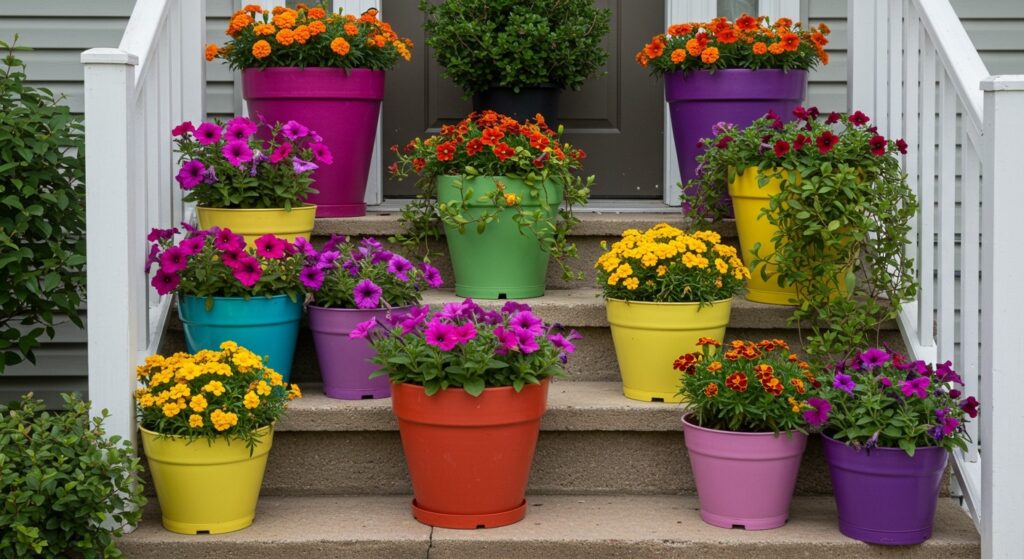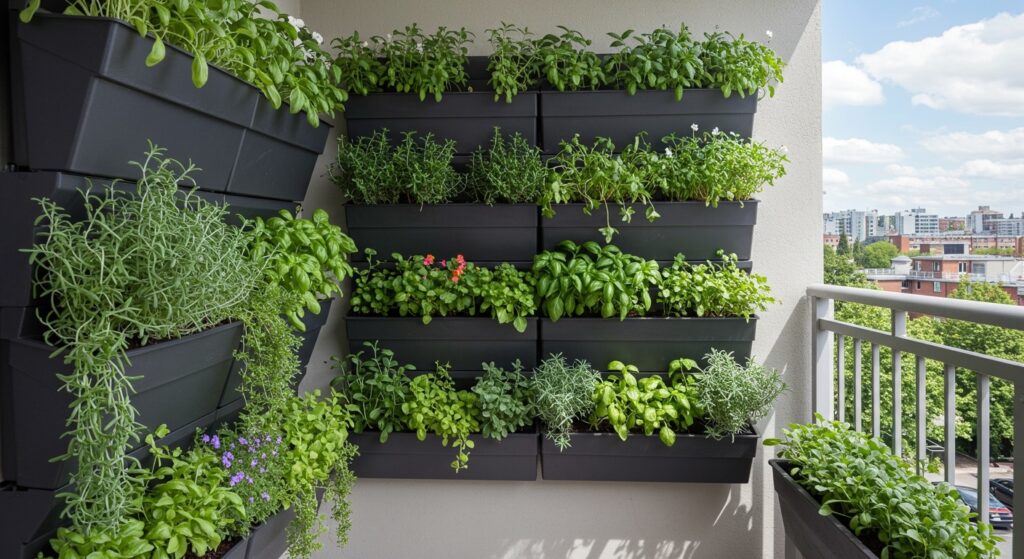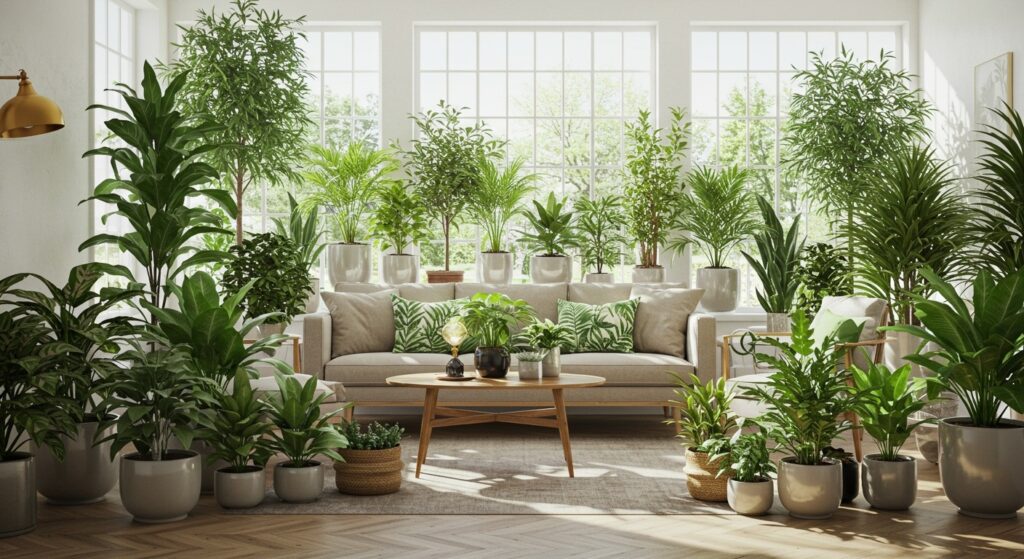You know that feeling when you walk past a home with gorgeous flowers spilling out of beautifully arranged pots? That could be your space. Container gardening flowers offer the perfect solution whether you’re working with a tiny balcony, a sprawling patio, or just a sunny windowsill. The beauty is in the flexibility – you can move them around, experiment with combinations, and change things up with the seasons.
I’ve learned that growing flowering plants for pots isn’t as intimidating as it seems. Actually, containers can be more forgiving than traditional garden beds since you control the soil, drainage, and placement. Plus, there’s something deeply satisfying about creating your own colorful container gardens that reflect your personal style.
What makes container gardening so appealing is the instant gratification. Unlike waiting for perennials to establish themselves, you can create a stunning display in an afternoon. Ready to explore some ideas that’ll transform your outdoor (or indoor) spaces?
1. Classic Geranium Charm

Geraniums are the workhorse of container gardens, and for good reason. These resilient beauties bloom continuously from spring through fall with minimal fussing. I appreciate how they handle both full sun and partial shade, making them adaptable to different spots around your home.
The color range spans from classic reds and pinks to softer corals and whites. Their slightly spicy-scented foliage adds an extra sensory dimension that many people don’t expect. One pot makes a statement, but grouping several together in varying heights creates visual interest.
These plants are practically drought-tolerant once established, which means less stress if you occasionally forget to water. Deadheading spent blooms keeps them looking fresh, though
newer varieties are bred to be more self-cleaning. For anyone starting their container gardening journey, geraniums are genuinely foolproof.
2. Cascading Petunias
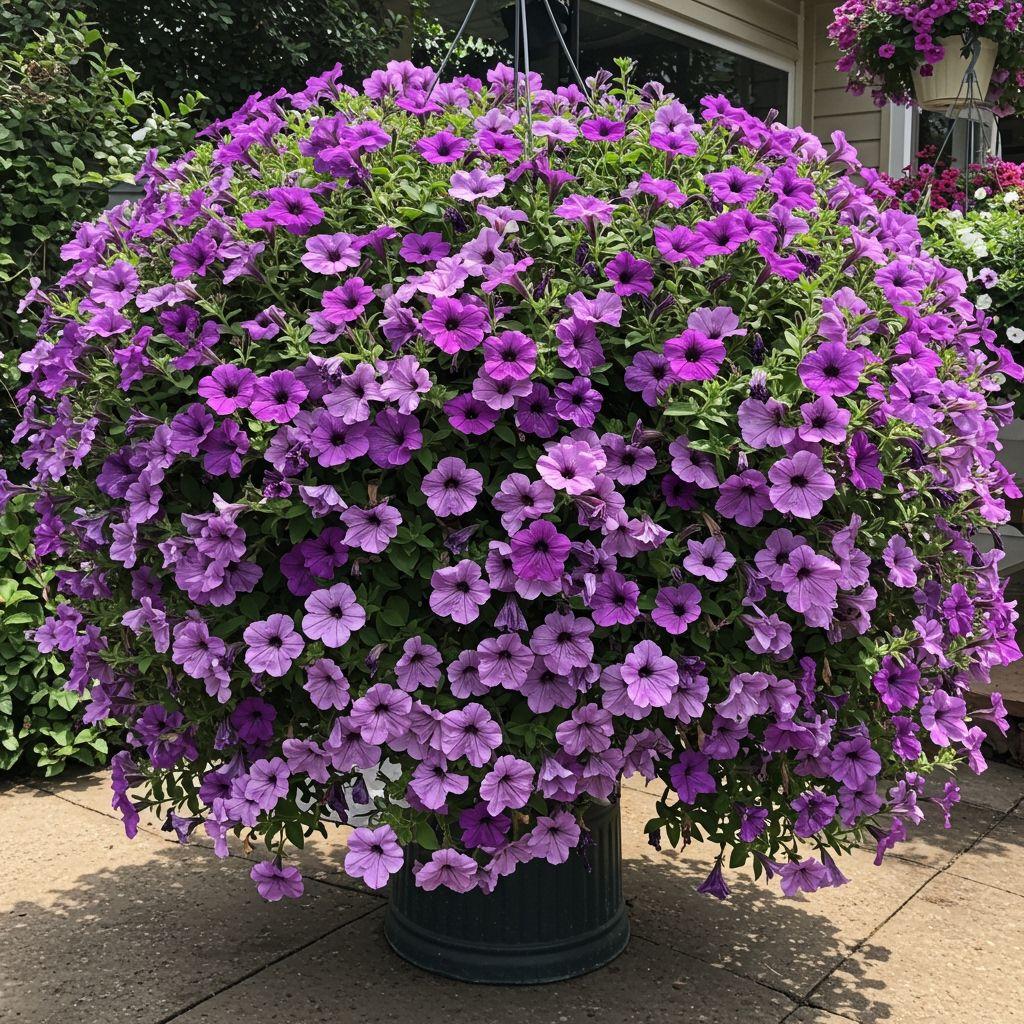
Wave petunias have revolutionized how we think about these traditional flowers. Unlike the compact varieties your grandmother grew, these modern cultivars spread and cascade in ways that create living waterfalls of color. They’re especially stunning in hanging baskets or elevated planters where their trailing habit shines.
The bloom production is almost absurd – I mean that in the best way. These plants pump out flowers relentlessly throughout the growing season if you keep them fed and watered. They come in every color imaginable, from deep velvets to bright citruses, making it easy to match your home’s aesthetic.
What surprises many people is how heat-tolerant petunias have become. Older varieties would sulk in summer’s peak, but newer breeding has created tough plants that thrive in challenging conditions. Just give them regular fertilizer and watch them perform like champions.
3. Sunny Marigold Mix
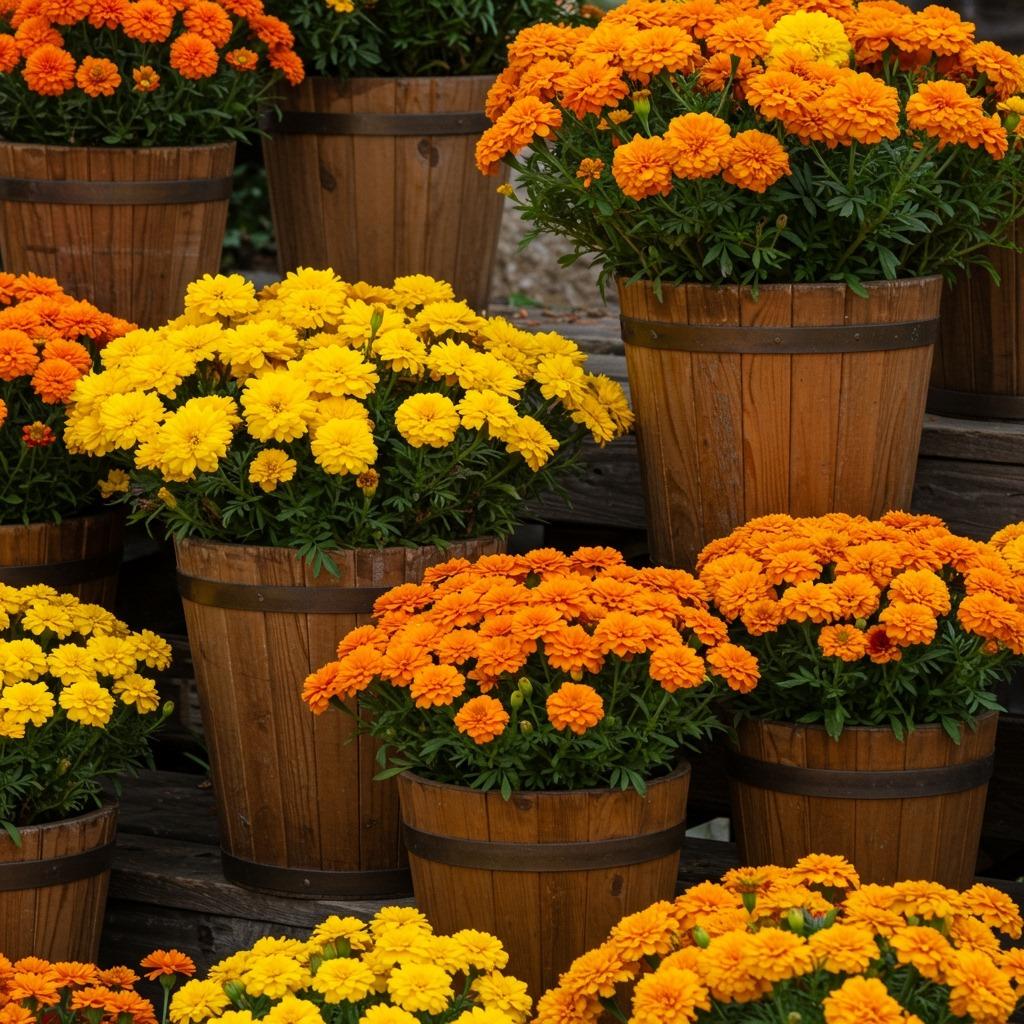
Marigolds bring that cheerful, can’t-help-but-smile energy to any container arrangement. These seasonal blooms are incredibly easy to grow from seed, which makes them budget-friendly if you’re filling multiple pots. Their pest-repelling properties are a bonus – many gardeners swear by them for keeping aphids away from more vulnerable plants.
The traditional orange and yellow varieties are classics, but don’t overlook the creamy whites and deep burgundies. French marigolds stay compact and tidy, perfect for smaller containers or as border plants in mixed arrangements. African marigolds grow taller with larger blooms, creating dramatic focal points.
These flowers actually prefer average soil and don’t need much pampering. Overfeeding can lead to more foliage than flowers, so a light touch works best. They’re also one of those plants that kids love growing, making them perfect for gardening for beginners or family projects.
4. Elegant Calibrachoa Clusters
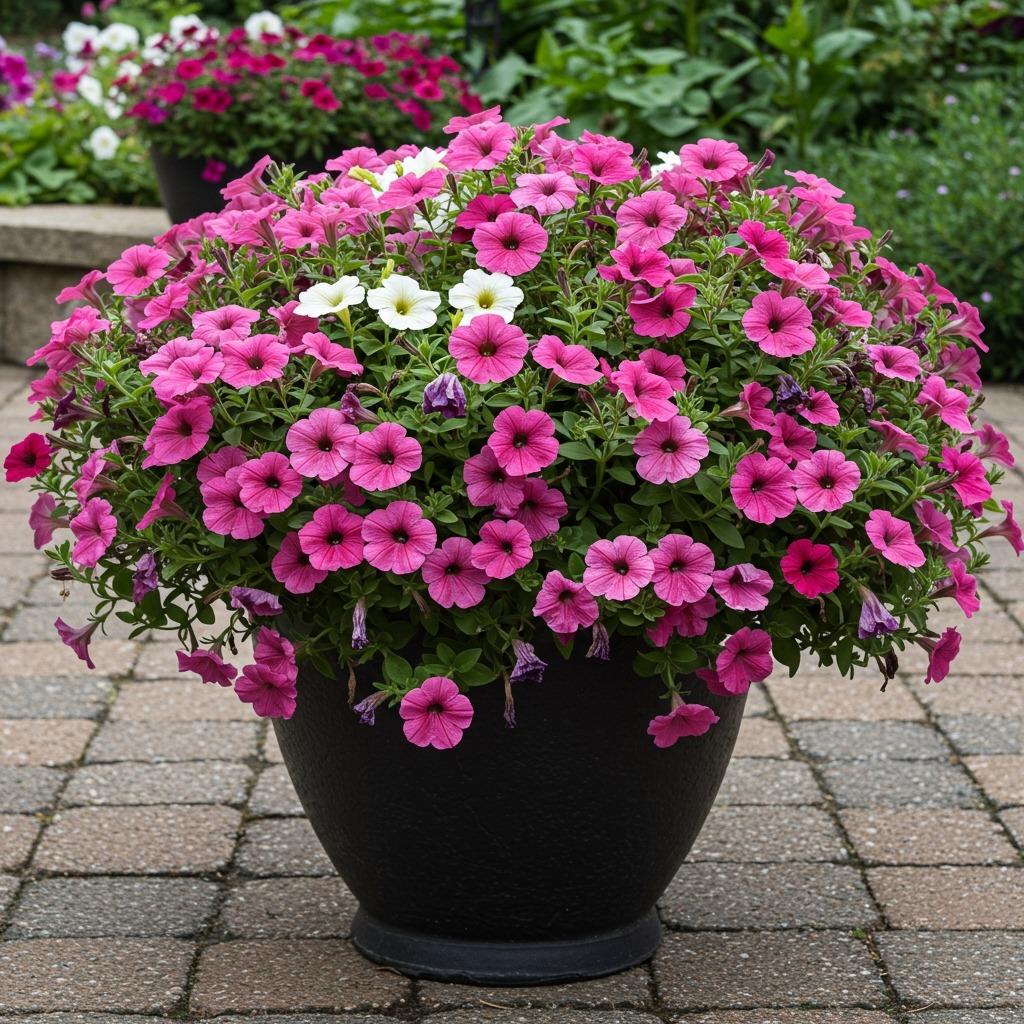
Calibrachoa, often called million bells, are like petunias’ daintier cousin. These charming flowers produce countless tiny blooms that create a soft, almost cloud-like appearance. They’re particularly effective in combination planters where their smaller scale complements larger focal flowers.
I find their maintenance requirements pleasantly low. Unlike some fussy bloomers, calibrachoa don’t require constant deadheading – they’re naturally self-cleaning. They do appreciate consistent moisture and benefit from regular feeding, but that’s about it. The payoff is continuous blooms from spring until frost.
These plants work beautifully in both single-color displays and mixed palettes. Their trailing habit makes them excellent choices for the edges of containers or in hanging baskets. The color selection includes jewel tones and pastels that photograph exceptionally well – Pinterest gold, basically.
5. Bold Zinnia Statement
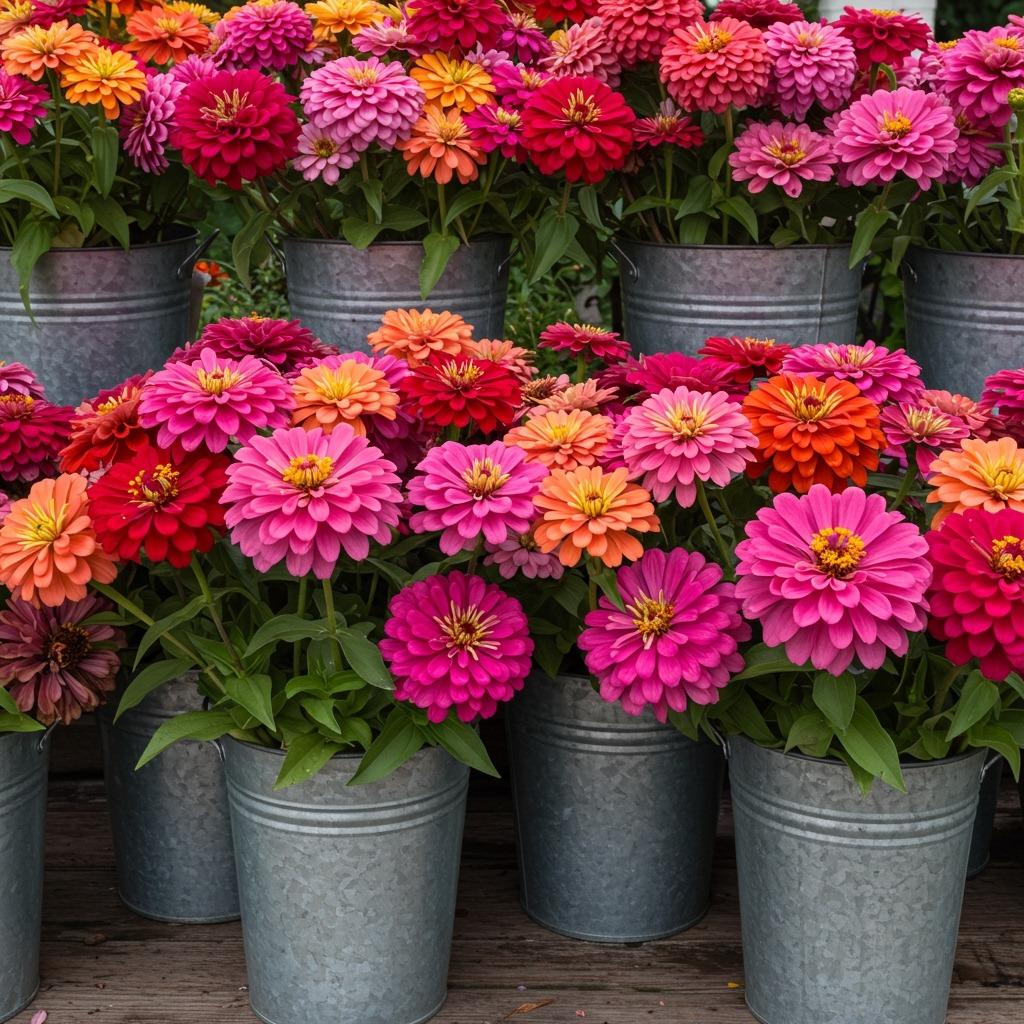
Zinnias bring bold personality to container gardens with their bright, unapologetic colors. These flowers are ridiculously easy to grow from seed, making them perfect for anyone who wants quick results. Within weeks of planting, you’ll have blooms that look like they belong in a professional garden.
What I love about zinnias is their versatility in container arrangements. Shorter varieties like ‘Profusion’ work beautifully in mixed pots, while taller types create stunning solo displays. They’re also spectacular cut flowers, so you can bring that container garden beauty indoors without guilt.
These heat-lovers thrive in summer conditions that make other flowers wilt. They’re practically bulletproof in terms of pest resistance and general toughness. Just ensure good air circulation to prevent powdery mildew, especially in humid climates. Adding them to your garden and nursery ideas collection is a no-brainer.
6. Romantic Impatiens Shade Solution
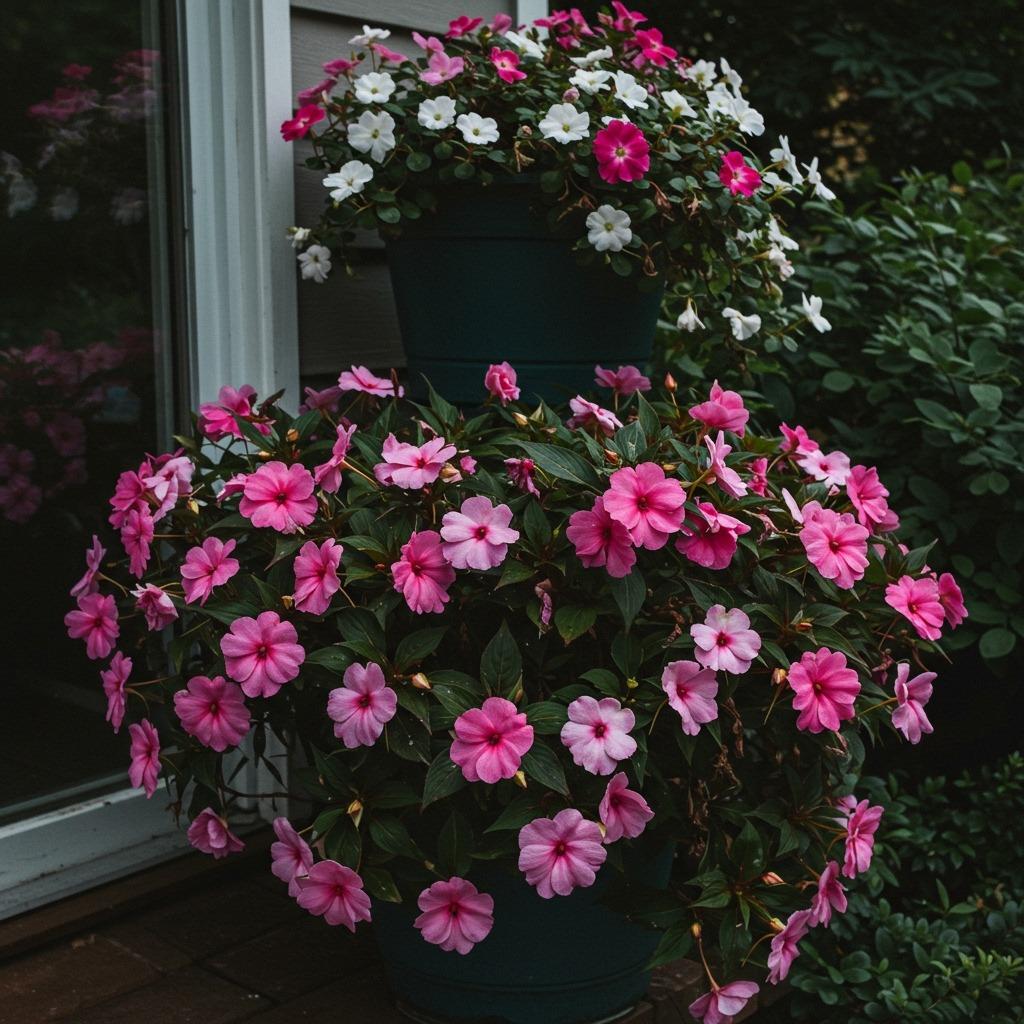
If you have shady spots that need brightening, impatiens are your answer. These shade-loving beauties produce an abundance of flowers even in conditions where most blooming plants would struggle. I’ve seen them transform dark entryways and covered patios into vibrant spaces.
The newer hybrid varieties offer improved disease resistance compared to older types. They come in a rainbow of colors, from pure whites to deep salmons and bi-colors. Their mounding habit creates full, lush containers that look professionally designed with minimal effort.
Impatiens do require consistent moisture – they’ll wilt dramatically if allowed to dry out completely. The good news is they bounce back quickly once watered. This makes them ideal for spots where you can easily monitor moisture levels, like near your back door or on a covered porch.
7. Cottage Garden Pansies
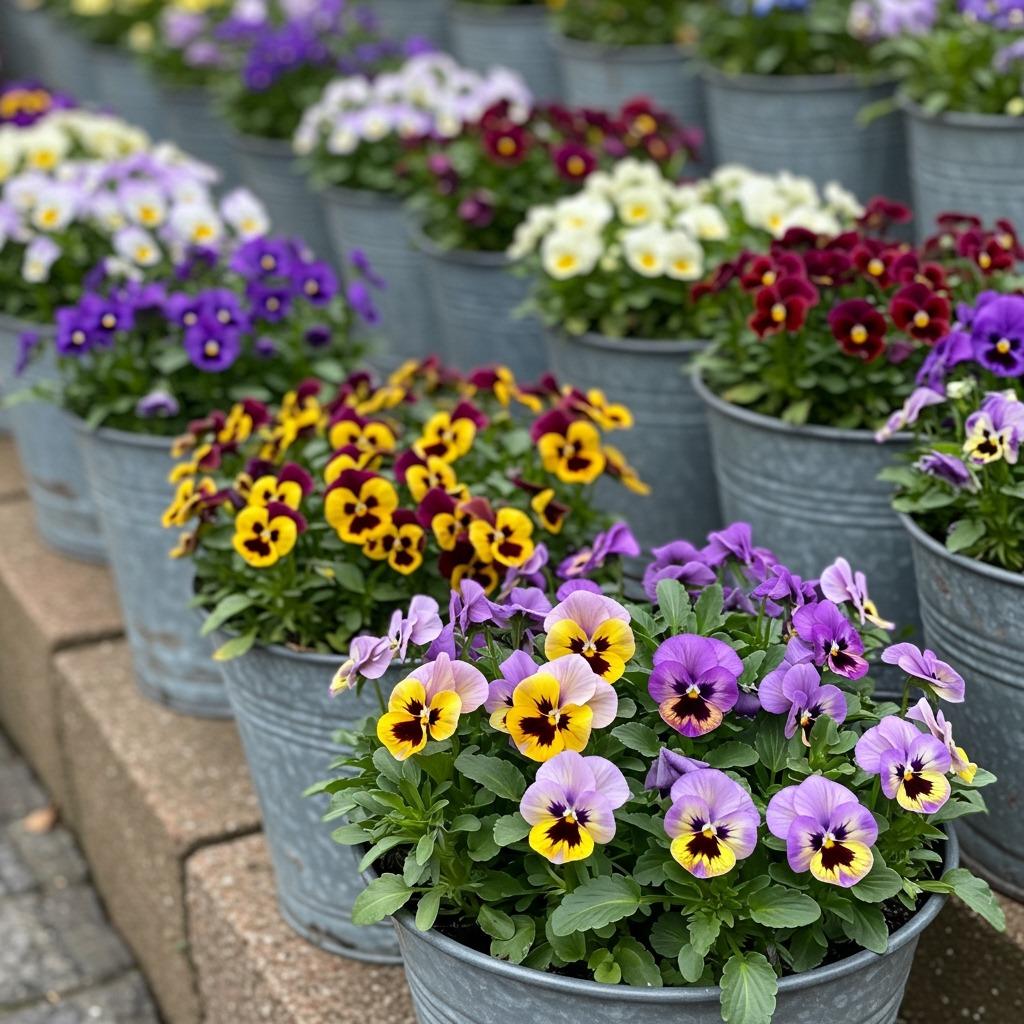
Pansies are the cool-season champions of container gardening flowers. These charming blooms thrive when temperatures are moderate, making them perfect for spring and fall displays. Their distinctive “faces” add personality that other flowers simply can’t match.
What makes pansies special is their cold tolerance. They’ll keep blooming through light frosts and even bounce back from snow in many climates. This extended season means you’re not left
with empty containers during transitional months. The color combinations available are seemingly endless, from solid jewel tones to intricate patterns.
I appreciate how well they combine with other cool-season plants like violas, dusty miller, and ornamental kale. They’re also relatively compact, making them suitable for smaller spaces or mixed arrangements. Deadheading encourages more blooms, but even without it, they maintain a tidy appearance.
8. Tropical Hibiscus Drama
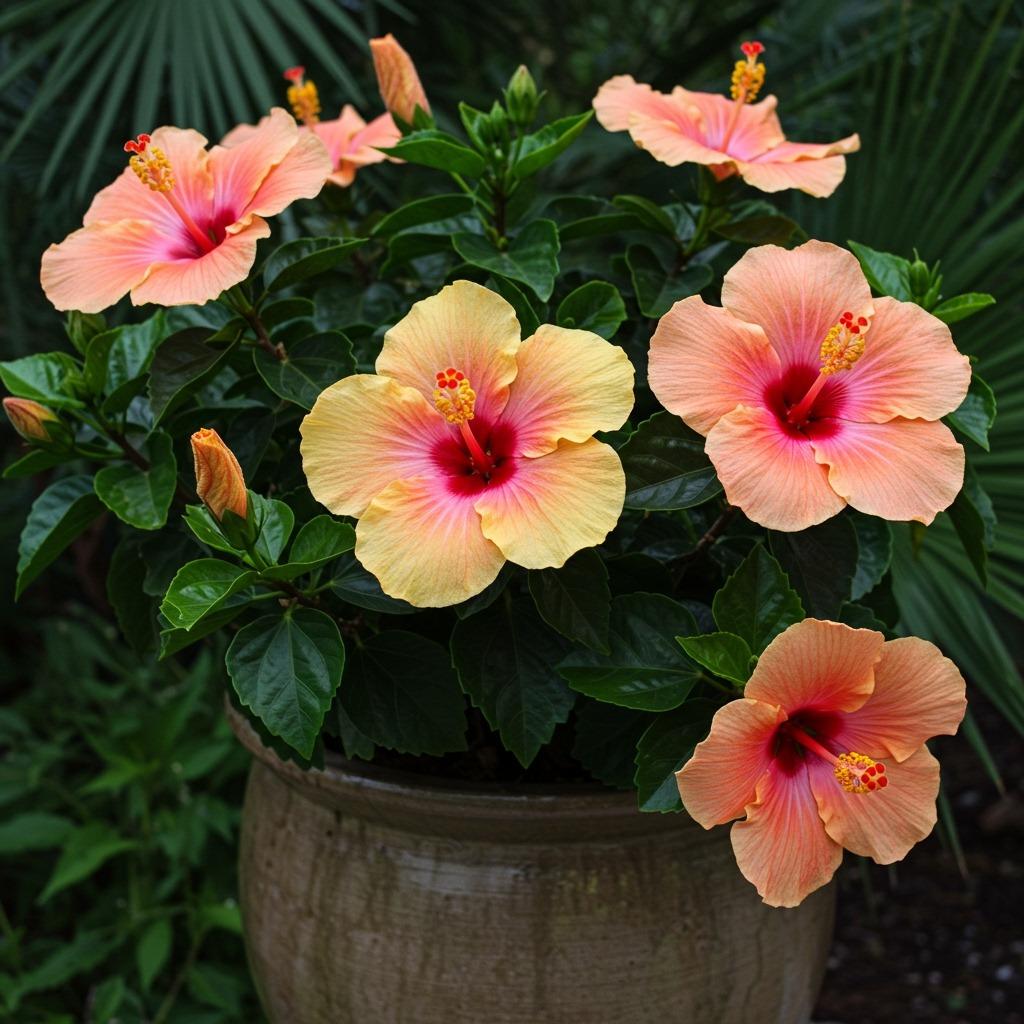
Tropical hibiscus brings vacation vibes to your container collection. These show-stopping flowers can be enormous – some varieties produce blooms the size of dinner plates. While they’re tender perennials that need winter protection in cold climates, the dramatic impact they provide makes the extra care worthwhile.
The bloom cycle is fascinating to watch. Each flower typically lasts only a day or two, but healthy plants produce new blooms continuously throughout the warm season. Colors range from traditional reds and pinks to unusual peaches, yellows, and even purple-blacks. The glossy foliage remains attractive even between blooming cycles.
These plants do have specific needs. They want plenty of sun, consistent moisture, and regular feeding to support their heavy blooming. They’re also ideal candidates for bringing indoors during winter if you have a bright spot. Consider placing them near your indoor garden living room setup during colder months.
9. Sweet Alyssum Fragrance

Alyssum might be small-flowered, but its impact is mighty. This low-growing plant creates soft mounds or cascades of tiny blooms that release a sweet, honey-like fragrance. It’s one of those flowers that works magic as a filler or edging plant in mixed containers.
The reseeding tendency means alyssum often returns year after year, popping up in unexpected places. Some gardeners consider this a delightful surprise, while others prefer to control its placement. Either way, it’s incredibly easy to manage. The plant thrives in cool weather and can even handle light frosts.
What I find remarkable is how alyssum attracts beneficial insects. Tiny pollinators and predatory insects love these flowers, which can help keep pest populations in check throughout your container garden. It’s also one of the most affordable flowering plants for pots, often available in large six-packs.
10. Vibrant Coleus Accent
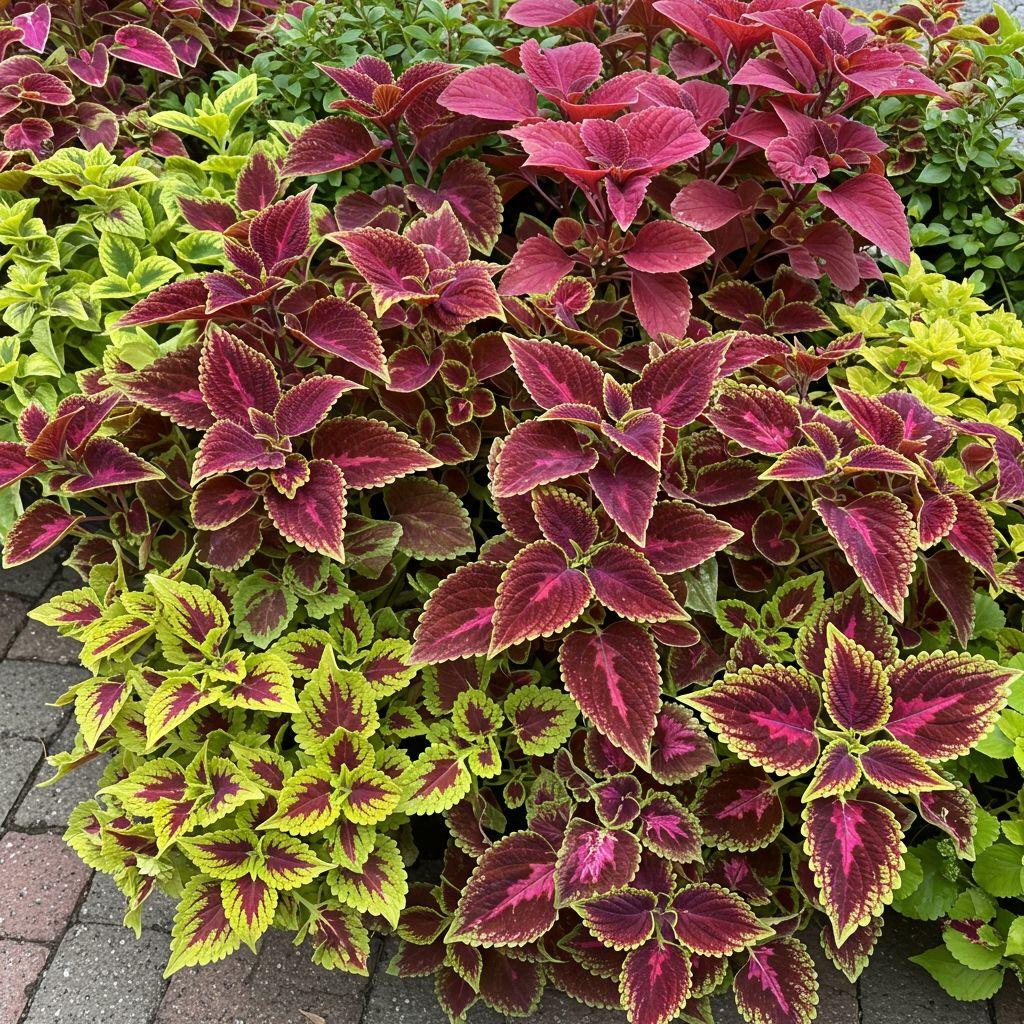
Now, technically coleus are grown for foliage rather than flowers, but their colorful leaves rival any bloom display. These plants bring continuous color to containers from spring through frost without the need for deadheading or encouraging blooms. The variety of leaf patterns and colors is staggering.
Modern coleus breeding has created sun-tolerant varieties that would have shocked gardeners from previous generations. While they still appreciate some afternoon shade in hot climates, many can handle full sun beautifully. They’re also excellent for shaded areas where flowering options are limited.
The growth habit ranges from compact and tidy to tall and dramatic. Pinching back the growing tips creates bushier plants and prevents flowering, which can make the foliage less vibrant. They root easily from cuttings, so you can propagate your favorites for free. These work wonderfully in vertical gardening ideas when you want continuous color.
11. Classic Begonia Elegance
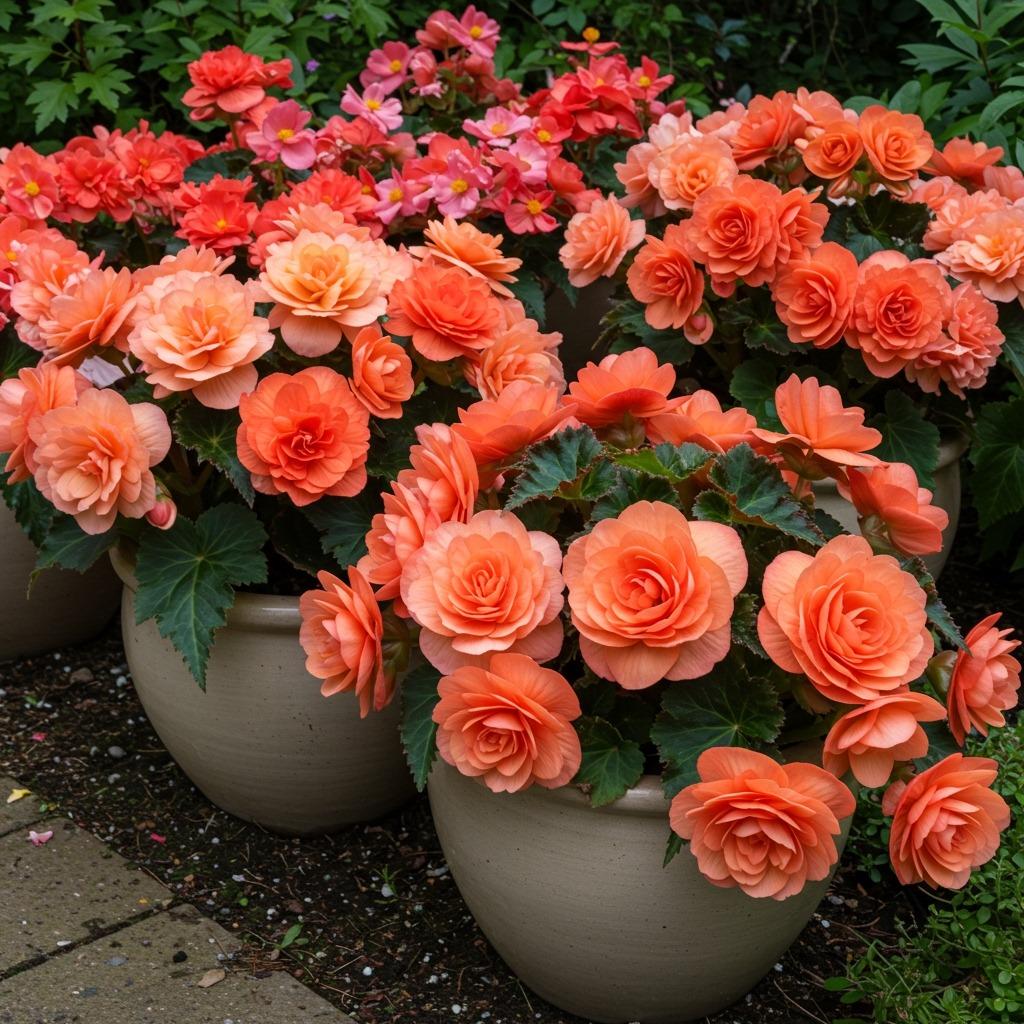
Begonias offer elegance that few other container flowers can match. The tuberous varieties produce blooms that look like roses or camellias, while wax begonias provide dependable color in a more modest package. Both types excel in containers and bring a sophisticated look to any setting.
Tuberous begonias prefer cooler temperatures and partial shade, making them perfect for those tricky spots that get morning sun and afternoon shade. Their blooms can be enormous on upright types or trailing on pendulous varieties. The color range includes every warm tone imaginable, from pale yellows to deep oranges and reds.
Wax begonias are the reliable choice for sunny spots or more challenging conditions. They handle heat better and require less maintenance than their tuberous cousins. Both types benefit from consistent moisture and well-draining soil. Dragon wing begonias, a popular hybrid, combine the best traits of both categories.
12. Cheerful Gerbera Daisies
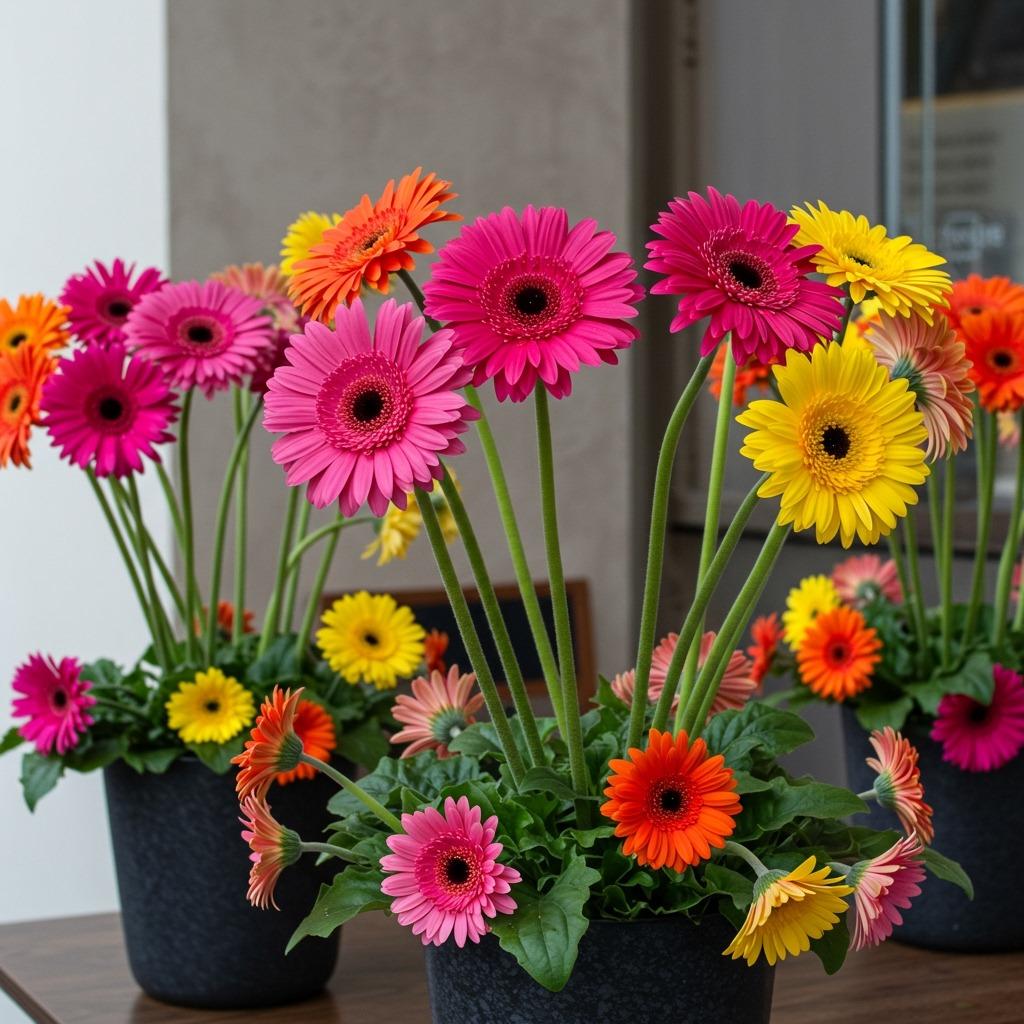
Gerbera daisies bring instant joy with their large, perfectly formed flowers. These colorful container gardens stars come in nearly every color except blue, with some varieties featuring contrasting centers or gradiated petals. They have a way of making people smile that few other flowers achieve.
Growing them in containers is often more successful than in-ground planting, especially in humid climates. Good drainage is crucial – these plants are susceptible to crown rot if water sits around their base. Use a well-draining potting mix and ensure containers have adequate drainage holes.
Gerberas can be challenging in extreme heat, often taking a break from blooming during the hottest weeks. They’ll resume flowering as temperatures moderate. Regular deadheading is important both for appearance and to encourage new blooms. While they’re technically perennials in warm climates, many gardeners treat them as seasonal displays.
13. Delicate Lobelia Cascade
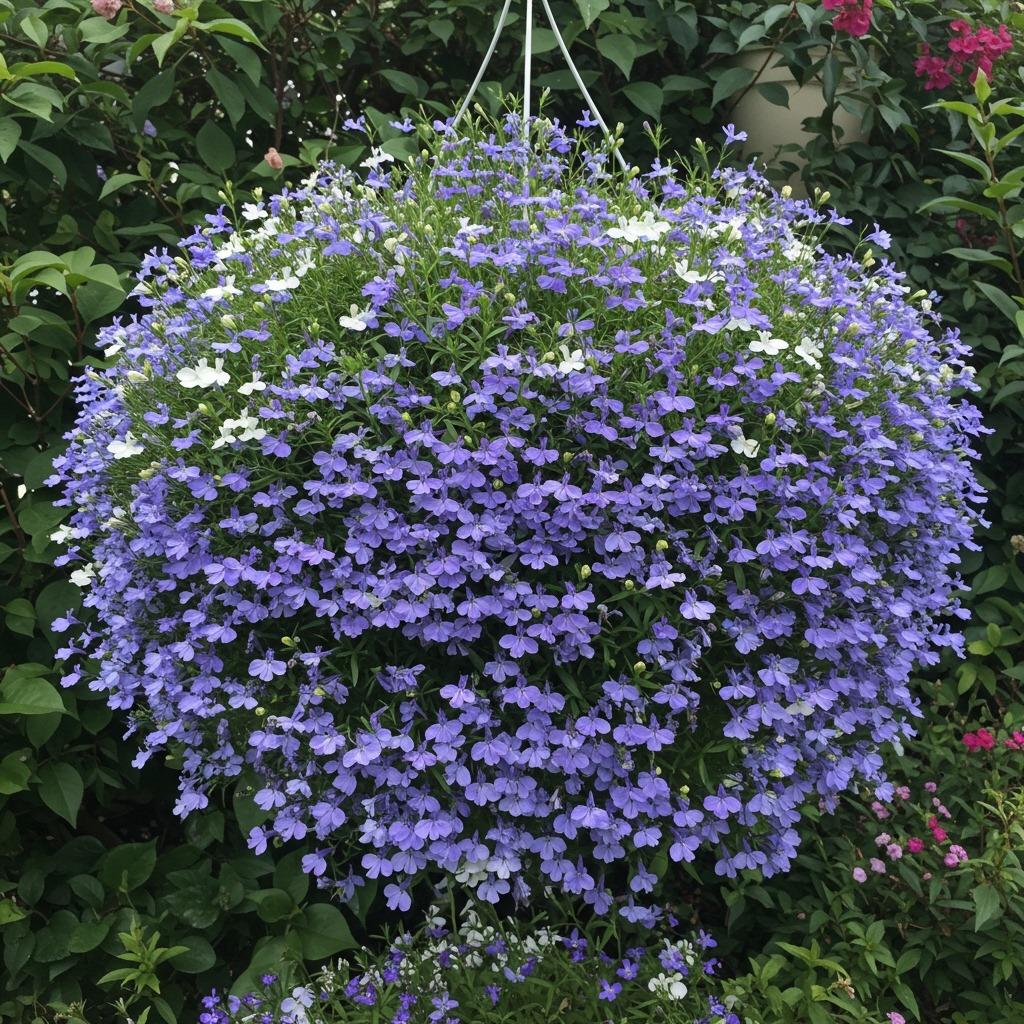
Lobelia creates that ethereal, cottage garden look that’s incredibly popular in container designs. The most common variety produces masses of small blue flowers, though you can also find white, pink, and bicolor options. Its trailing habit makes it perfect for hanging baskets or the edges of mixed containers.
This cool-season lover performs best in spring and fall in most climates. It may struggle or take a break during peak summer heat, especially in warmer regions. Some gardeners shear it back by half in midsummer to encourage a fresh flush of growth and blooms as temperatures cool.
Lobelia pairs beautifully with nearly everything. Its delicate appearance complements bolder flowers without competing for attention. The color is often described as true blue, which is relatively rare in the flower world. Consistent moisture is key – these plants will crisp up quickly if allowed to dry out completely.
14. Dramatic Canna Lily Focus
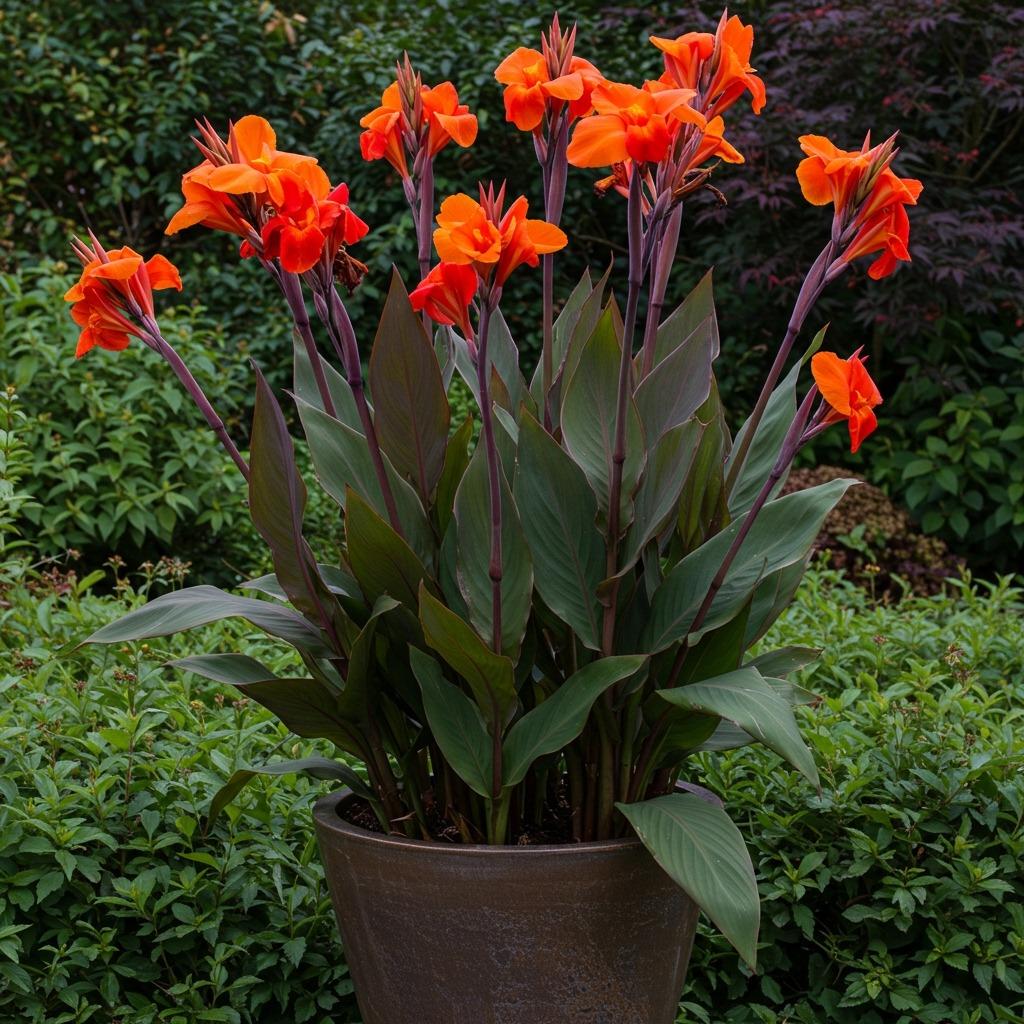
Canna lilies bring tropical drama on a grand scale. These tall, architectural plants work beautifully as thriller elements in large container arrangements or as standalone specimens. Their bold foliage comes in green, bronze, or variegated patterns, providing interest even when not in bloom.
The flowers emerge on tall stalks above the foliage, creating a dramatic layered effect. Colors include hot reds, oranges, yellows, and even pink varieties. Each bloom cluster produces flowers in succession over several weeks. The combination of striking foliage and exotic flowers makes them irresistible for creating focal points.
Cannas need space – both in terms of container size and growing room. They’re heavy feeders and drinkers during the growing season, so plan accordingly. In cold climates, you’ll need to dig up and store the rhizomes over winter, or simply treat them as annuals. They’re worth the effort for the impact they provide.
15. Versatile Lantana Clusters
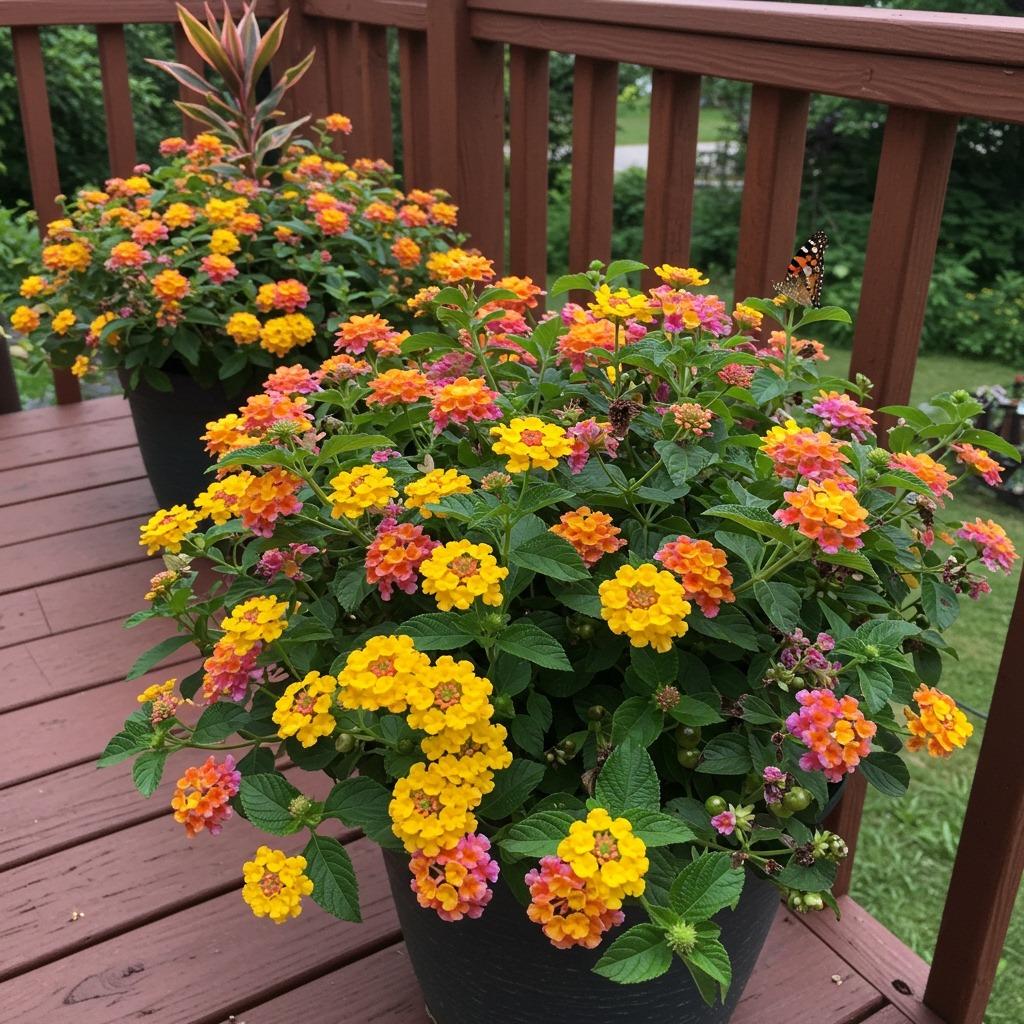
Lantana deserves more attention than it gets. These tough, heat-loving plants produce clusters of tiny flowers that often change color as they age, creating a multicolor effect within each bloom cluster. They’re butterfly magnets, bringing movement and life to your container displays.
The drought tolerance is impressive once established. Lantana can handle missed waterings better than most flowering plants for pots, making them perfect for busy gardeners or vacation-prone households. They bloom continuously from late spring until frost without deadheading, though removing spent flowers does keep them tidier.
Available forms range from upright and bushy to trailing varieties perfect for hanging baskets. The color combinations are stunning – yellows aging to orange, pinks fading to cream, or bold reds mixed with gold. Some varieties have a slight scent that people either love or dislike, so smell before buying if possible. These work wonderfully in affordable home upgrades for curb appeal.
Combining Flowers for Maximum Impact
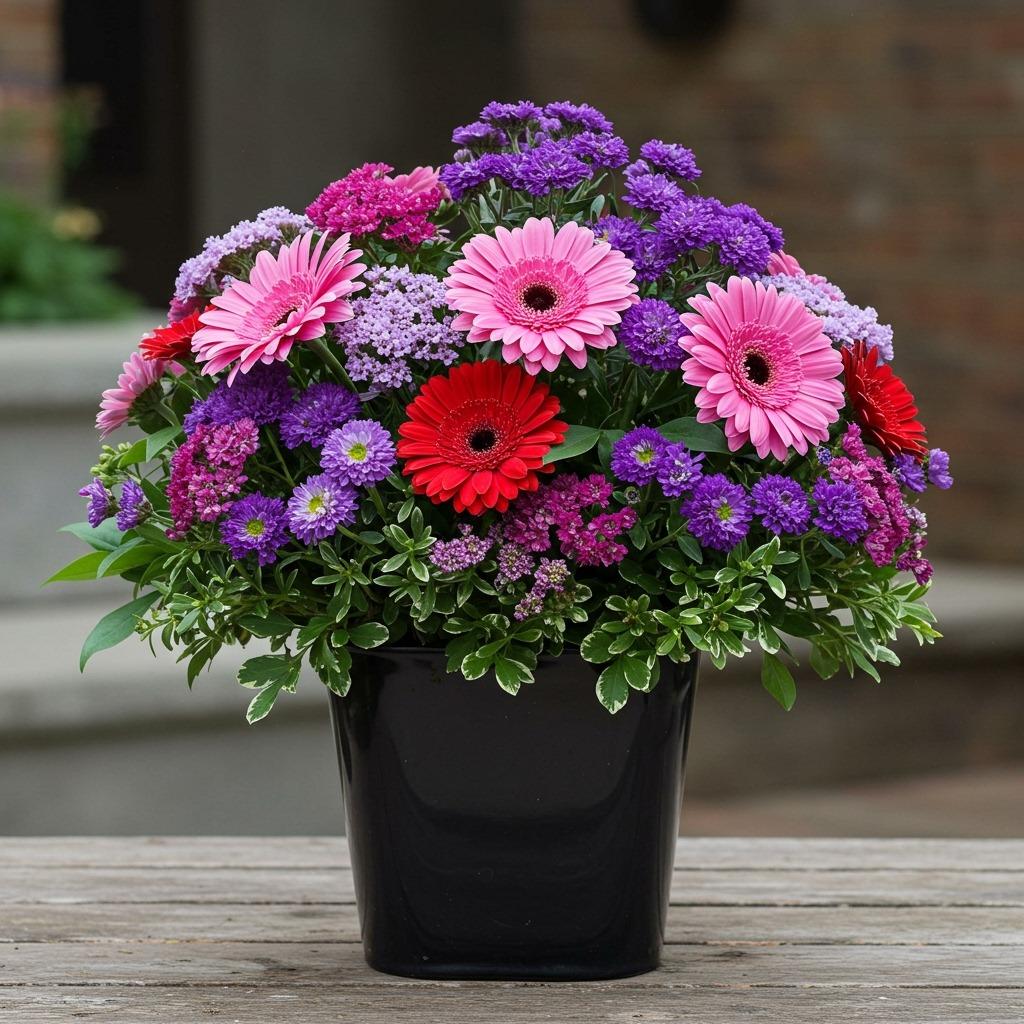
The thriller-filler-spiller formula transforms good containers into great ones. The thriller is your tall, focal plant – think canna lily or tall zinnia. Fillers are medium-height plants that fill the middle space with color and texture. Spillers trail over the edges, softening the container’s rim and creating movement.
Color theory matters more than people realize. Complementary colors (opposites on the color wheel) create vibrant, energetic combinations. Analogous colors (neighbors on the wheel) produce harmonious, soothing arrangements. Monochromatic schemes using various shades of one color look sophisticated and intentional.
Don’t forget about bloom timing and growing conditions. Pair plants with similar light and water requirements to avoid constantly compromising someone’s needs. Consider adding non-flowering elements like ornamental grasses, herbs, or trailing foliage plants to give your eyes a place to rest between colorful blooms.
Container Selection and Care Tips
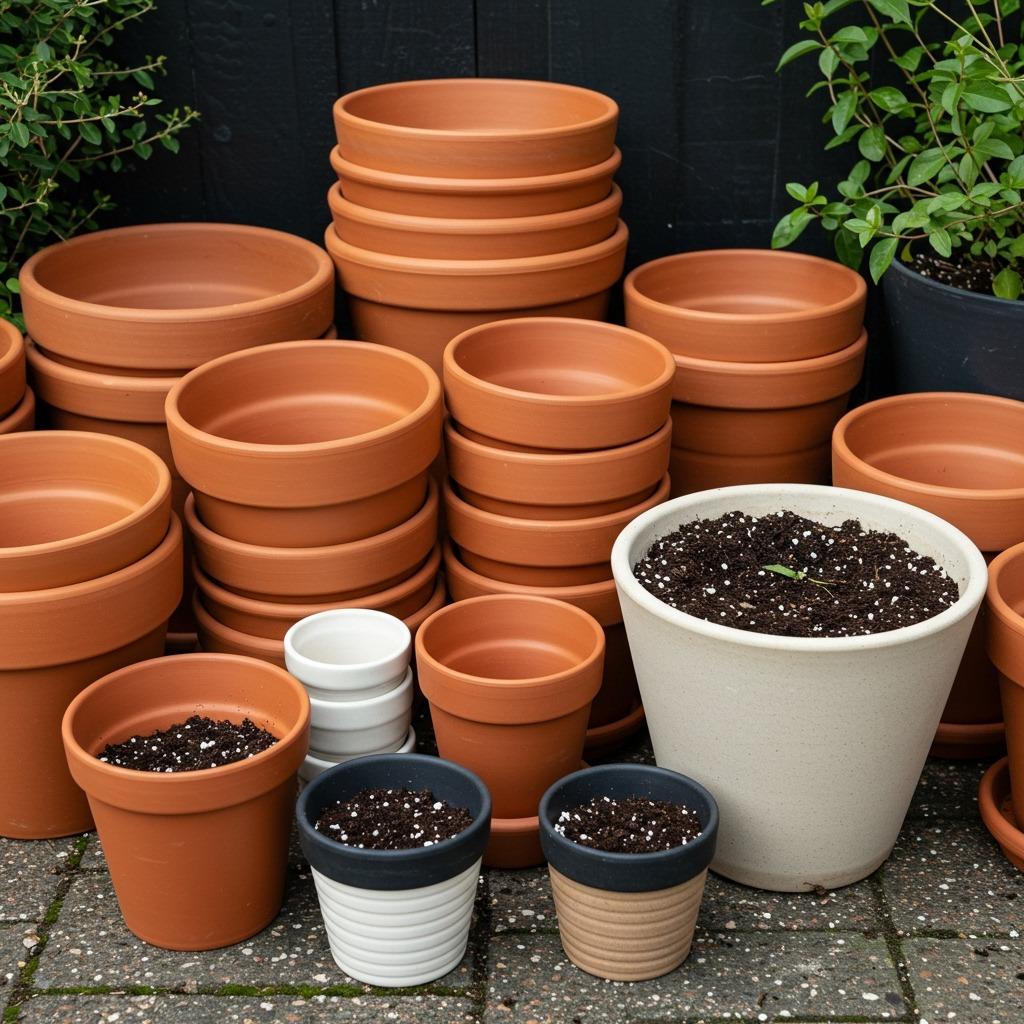
The container itself impacts your flowers’ success more than you might think. Drainage is non-negotiable – without it, even the toughest plants will struggle. If you fall in love with a pot without holes, either drill some or use it as a decorative outer container with a draining pot inside.
Size matters too. Bigger is generally better because larger soil volumes hold moisture more consistently and give roots room to spread. As a baseline, go for containers at least 12 inches in diameter for most flowering displays. Smaller pots work fine for compact plants but require more frequent watering.
Material choice affects watering frequency. Terracotta is classic but dries out quickly. Plastic or resin retains moisture longer and comes in every style imaginable. Glazed ceramic offers the best of both worlds – attractive and moisture-retentive. Consider the weight if you’ll be moving containers around seasonally. You might want to explore more ideas about small space renovation to maximize your available area.
Quality potting mix specifically formulated for containers makes a significant difference. Garden soil becomes too compacted in pots, restricting root growth and drainage. Container mixes include ingredients that maintain structure while retaining appropriate moisture. Adding slow-release fertilizer at planting time provides steady nutrition throughout the season.
Seasonal Rotation Strategies
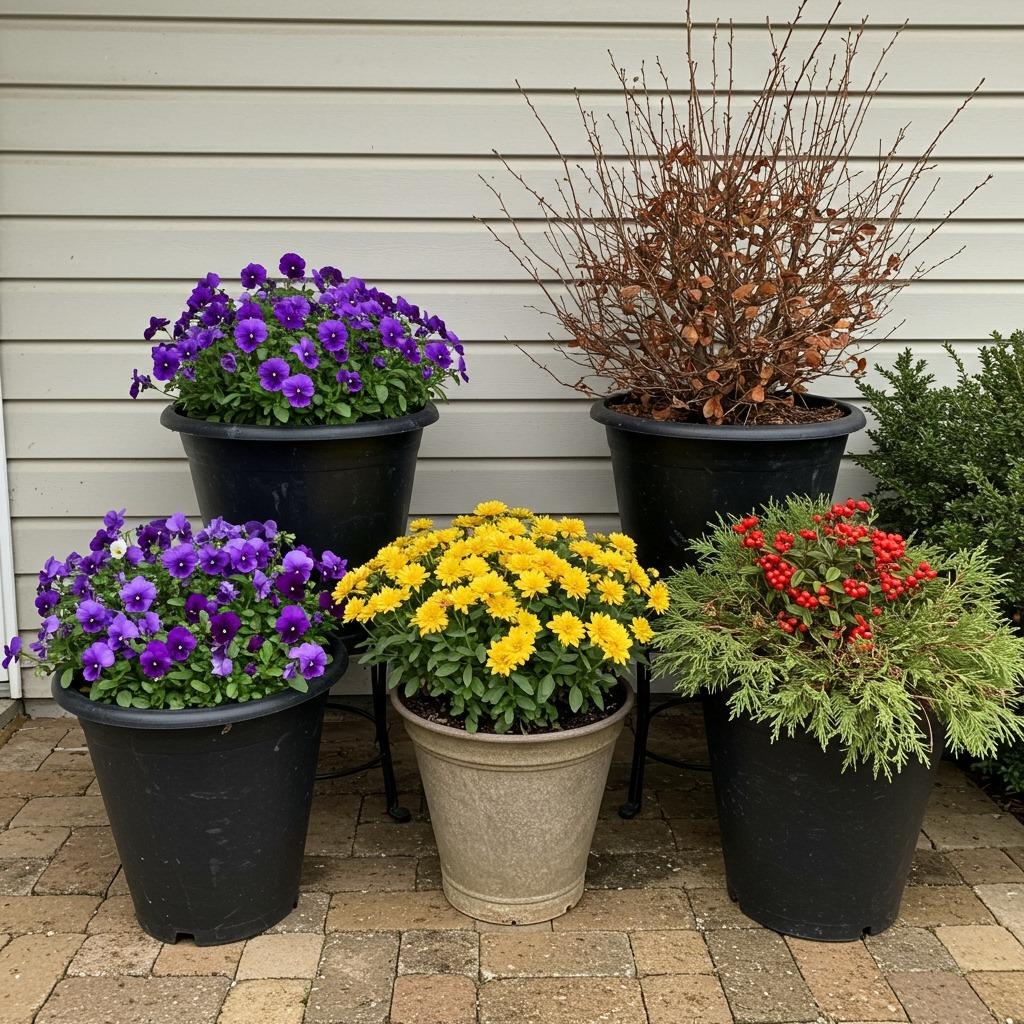
Planning seasonal blooms keeps your containers looking fresh year-round. Cool-season flowers like pansies, violas, and snapdragons shine in spring and fall. Transition to heat-loving summer bloomers like petunias, zinnias, and marigolds. In mild climates, ornamental kale and flowering cabbage provide winter interest.
The transition between seasons doesn’t have to mean starting from scratch every time. Sometimes you can simply add seasonal color to existing containers. For example, plant spring bulbs among fall-planted pansies – they’ll emerge and bloom in spring, creating two shows from one planting.
I’ve learned that maintaining a collection of containers in various stages makes seasonal transitions smoother. While your main display is performing, you can be preparing the next season’s pots in a less prominent location. This way, you can swap out tired containers for fresh ones without any awkward gaps in your display.
There’s something deeply satisfying about creating beautiful spaces with your own hands. Container gardening flowers offer endless possibilities for expression, experimentation, and enjoyment. Whether you start with a single pot of geraniums or dive into an elaborate mixed display, you’re adding life and color to your surroundings.
The flexibility to move containers around, try new combinations, and refresh your displays seasonally means you’re never locked into one look. Made a color choice that doesn’t quite work? Switch it up next season. Found a combination you love? Repeat it and refine it year after year.
Start small if you’re feeling uncertain. Grab one container, fill it with potting mix, and plant something that makes you happy. Water it, watch it grow, and see how much joy it brings. Then add another. Before you know it, you’ll have created your own little paradise of container-grown blooms that brightens every day.

